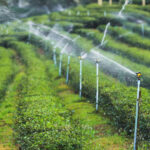Poultry farming is a significant contributor to food security and income generation in South Africa. However, many farmers face challenges that hinder their operations’ efficiency and profitability. Identifying and addressing common mistakes can make a substantial difference in improving productivity and ensuring long-term success. Here are 10 common mistakes in poultry farming and practical tips to avoid them.
1. Poor Housing and Ventilation
Mistake: Many farmers neglect proper housing, leading to overcrowding, poor ventilation, and susceptibility to diseases.
Solution: Design poultry houses that provide adequate space, ventilation, and protection from extreme weather. Ensure at least 0.1 square meters per bird for layers and 0.05 square meters for broilers. Use fans or ventilation systems to maintain air quality.
2. Inadequate Biosecurity Measures
Mistake: Allowing free movement of people and vehicles into poultry areas increases the risk of disease outbreaks.
Solution: Implement strict biosecurity measures, such as footbaths, disinfection stations, and restricted access to poultry houses. Quarantine new birds before introducing them to the flock.
3. Overcrowding
Mistake: Overcrowding leads to stress, aggression, and increased disease transmission.
Solution: Stick to recommended stocking densities. For broilers, maintain a density of 10-15 birds per square meter. For layers, ensure adequate space to avoid feather pecking and stress.
4. Feeding Low-Quality Feed
Mistake: Using cheap or low-quality feed results in poor growth, low egg production, and health issues.
Solution: Invest in high-quality, balanced poultry feed containing essential nutrients like proteins, vitamins, and minerals. Monitor feed storage to prevent mold contamination, which can harm birds.
5. Inconsistent Lighting
Mistake: Inadequate or inconsistent lighting affects laying patterns and growth rates.
Solution: Use artificial lighting systems to ensure layers receive 14-16 hours of light daily to maintain egg production. For broilers, maintain proper lighting schedules to balance growth and rest.
6. Neglecting Water Quality and Availability
Mistake: Providing dirty or insufficient water reduces feed intake and growth.
Solution: Supply clean, fresh water at all times. Clean drinkers daily and ensure the water source is free from contamination. Use nipple drinkers to minimize spillage and maintain hygiene.
7. Ignoring Vaccination Schedules
Mistake: Skipping or delaying vaccinations exposes flocks to preventable diseases like Newcastle Disease and Gumboro.
Solution: Develop and follow a strict vaccination schedule tailored to your region. Consult a veterinarian to ensure all essential vaccines are administered on time.
8. Improper Litter Management
Mistake: Dirty or wet litter causes ammonia buildup, leading to respiratory issues.
Solution: Regularly clean and replace bedding materials. Maintain a dry and clean environment by using absorbent materials like wood shavings. Monitor litter moisture levels to reduce ammonia emissions.
9. Failure to Monitor Bird Health
Mistake: Ignoring signs of illness or injury can lead to outbreaks and high mortality rates.
Solution: Observe birds daily for symptoms like lethargy, reduced feed intake, or abnormal droppings. Separate sick birds immediately and consult a veterinarian for diagnosis and treatment.
10. Poor Record-Keeping
Mistake: Many farmers fail to track expenses, production rates, and health interventions, making it difficult to identify inefficiencies.
Solution: Keep detailed records of feed consumption, vaccination schedules, egg production, and mortality rates. Use this data to assess the farm’s performance and make informed decisions.
Final Tips for Success
- Start Small: If you’re new to poultry farming, begin with a manageable number of birds and expand gradually.
- Continuous Learning: Stay informed about the latest poultry farming practices and technologies. Attend workshops and network with other farmers.
- Invest in Quality: Quality feed, housing, and equipment may seem expensive initially but pay off in the long run through better yields and reduced losses.
Avoiding these common mistakes can help South African poultry farmers enhance their operations and achieve sustainable success. By focusing on proper housing, feeding, biosecurity, and health management, farmers can minimize risks and maximize productivity. Poultry farming is a rewarding venture when done right, and with careful planning and attention to detail, South African farmers can thrive in this dynamic industry.







